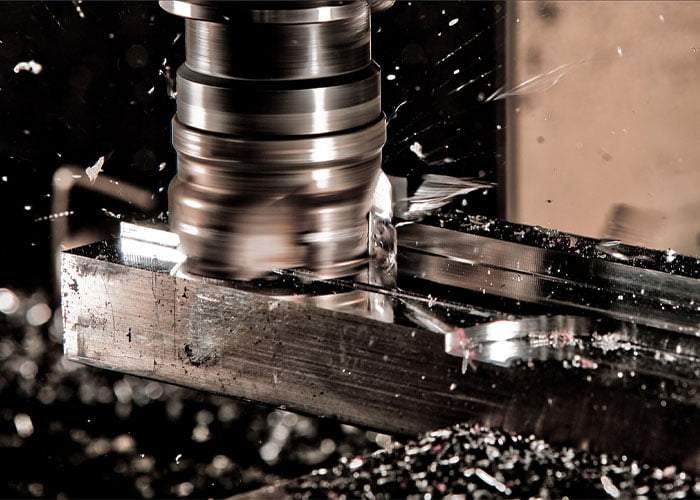Welcome to My Blog!
Before we dive into the content, I’d love for you to join me on my social media platforms where I share more insights, engage with the community, and post updates. Here’s how you can connect with me:
Facebook:https://www.facebook.com/profile.php?id=100085401406977
LinkedIn:https://www.linkedin.com/showcase/102680001/admin/dashboard/
Now, let’s get started on our journey together. I hope you find the content here insightful, engaging, and valuable.
Introduction

Steel forgings play a crucial role in various industries, known for their exceptional strength and durability. The process of steel forgings involves shaping and refining steel at high temperatures to enhance its mechanical properties. In this comprehensive guide, we will delve into the intricacies of the steel forging process, its advantages, applications, and more. Understanding the fundamentals of steel forgings can help manufacturers make informed decisions in their production processes.
What Are Steel Forgings?
Steel forgings are metal parts made by deforming steel under high pressure. This process improves the steel’s strength, toughness, and fatigue resistance compared to other manufacturing methods like casting. Steel forgings can be produced in various shapes, including bars, rings, and custom-designed components. The result is a product that meets specific engineering requirements and can withstand demanding applications.
Key Advantages of Steel Forgings
Enhanced Strength: The forging process aligns the grain structure of the steel, resulting in higher strength.
Improved Ductility: Steel forgings exhibit better ductility, allowing them to absorb energy without breaking.
Uniform Properties: The forging process produces uniform properties throughout the material, reducing the likelihood of weak points.
Versatility: Steel forgings can be made in various shapes and sizes, making them suitable for a wide range of applications.
The Steel Forging Process
The steel forging process involves several stages, each contributing to the final product’s quality. Below is a detailed breakdown of each stage.
Material Selection
Selecting the right type of steel is crucial for producing high-quality forgings. Various steel grades, such as carbon steel, alloy steel, and stainless steel, can be used depending on the desired properties of the finished product.
Heating the Steel
The selected steel is heated to a temperature where it becomes malleable. This temperature varies depending on the type of steel, typically ranging from 1,000°F to 2,300°F. Heating improves the workability of the steel, making it easier to shape.
Forging
Once the steel reaches the desired temperature, it is placed under a forging press or hammer. The steel is shaped through various methods, including:
- Open-die forging: The steel is shaped between two flat dies.
- Closed-die forging: The steel is shaped inside a mold that defines its final form.
- Roll forging: The steel is shaped through a series of rollers.
Cooling
After forging, the steel must be cooled to stabilize its new shape. This can be done slowly in air or rapidly using water or oil, depending on the desired properties. The cooling rate can influence the steel’s hardness and strength.
Finishing Processes
Once cooled, the steel forgings may undergo additional processes, such as machining, heat treatment, and surface finishing, to achieve the desired dimensions and surface quality.
Applications of Steel Forgings

Steel forgings are utilized in various industries due to their superior properties. Below is a table showcasing some common applications of steel forgings:
| Industry | Application | Description |
|---|---|---|
| Aerospace | Aircraft components | Critical parts like landing gears and frames |
| Automotive | Crankshafts, gears, and axles | Essential for vehicle performance and safety |
| Oil and Gas | Drill bits, valves, and pump components | Key in extraction and transportation of oil |
| Construction | Structural beams and connectors | Provides strength in building infrastructure |
| Manufacturing | Machine parts and tools | Used in various machinery and equipment |
Conclusion
The process of steel forgings is a vital manufacturing technique that results in strong, durable components used across various industries. From material selection to final finishing, each stage of the forging process contributes to the superior properties of steel forgings. Understanding these processes helps manufacturers choose the right materials and techniques for their specific needs, ensuring the production of high-quality products that meet industry standards.
FAQ
What role do finishing processes play in steel forgings?
Finishing processes, such as machining and surface treatment, enhance the final product’s dimensional accuracy, surface quality, and overall performance in its intended application.
What is the process of steel forgings?
The process of steel forgings involves heating steel to a malleable temperature and then shaping it under high pressure to improve its mechanical properties.
What are the key advantages of steel forgings?
Steel forgings offer several advantages, including enhanced strength, improved ductility, uniform properties, and versatility for various applications.
What types of steel are commonly used for forgings?
Common types of steel used for forgings include carbon steel, alloy steel, and stainless steel, selected based on the desired characteristics of the final product.
How is steel heated for the forging process?
Steel is heated in furnaces to temperatures ranging from 1,000°F to 2,300°F, making it malleable and easier to shape.
What are the different methods of forging?
The main methods of forging include open-die forging, closed-die forging, and roll forging, each offering different shaping capabilities.
What happens to the steel after it is forged?
After forging, the steel is cooled and may undergo additional processes like machining, heat treatment, and surface finishing to achieve the desired specifications.
What industries commonly use steel forgings?
Steel forgings are utilized in various industries, including aerospace, automotive, oil and gas, construction, and manufacturing.
How does the cooling process affect the properties of forged steel?
The cooling rate can influence the hardness, strength, and ductility of the forged steel, affecting its performance in applications.
